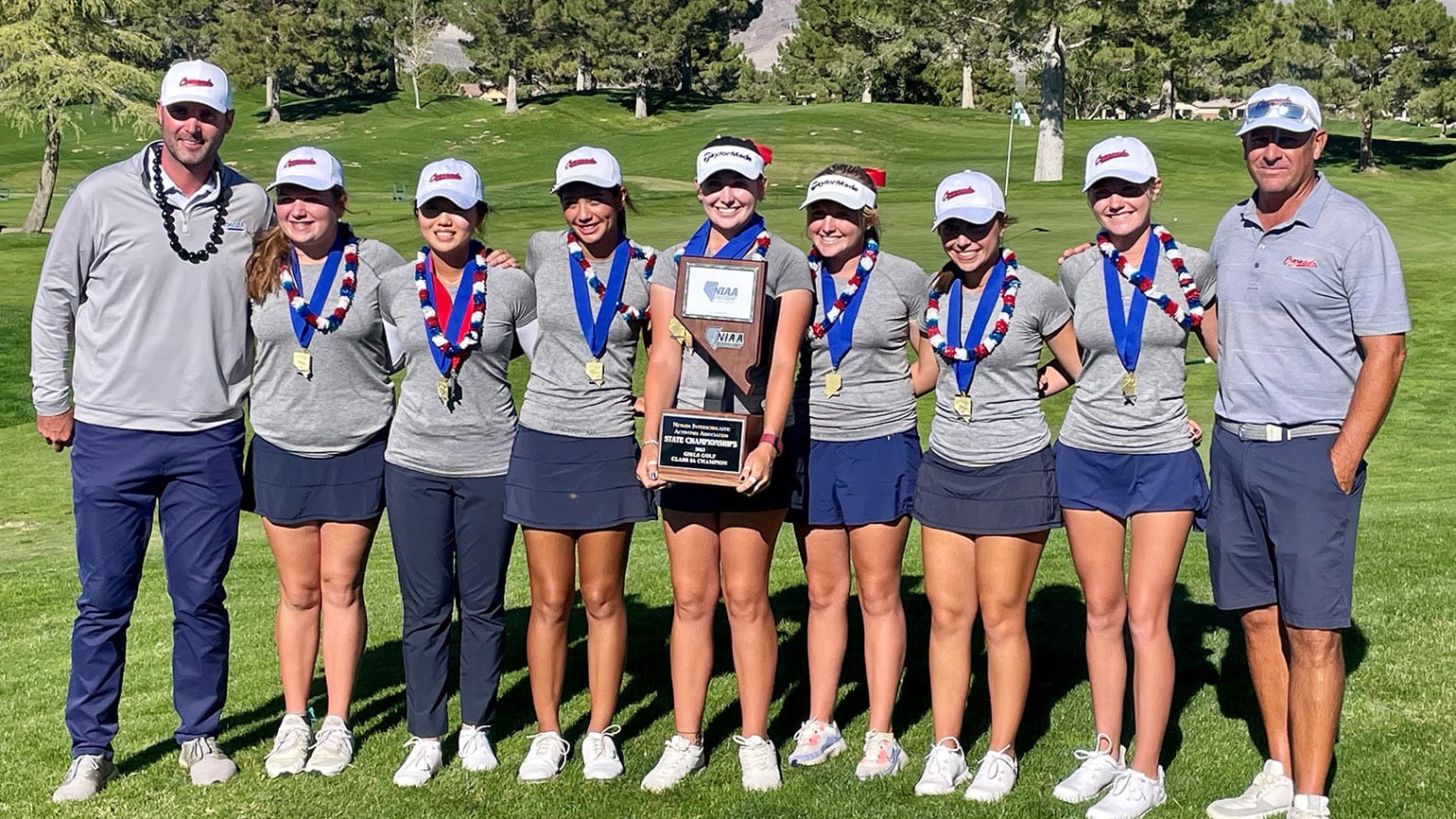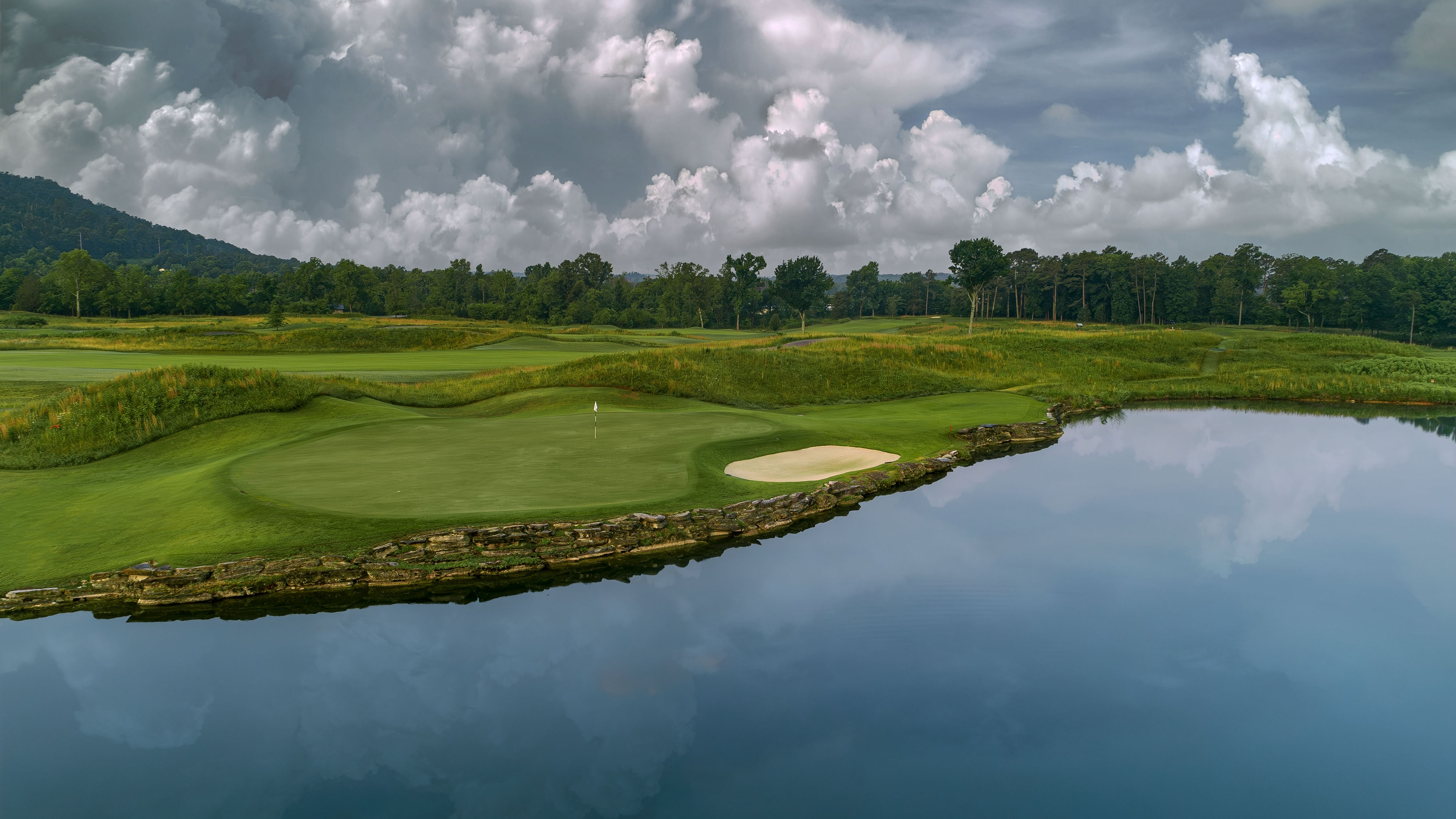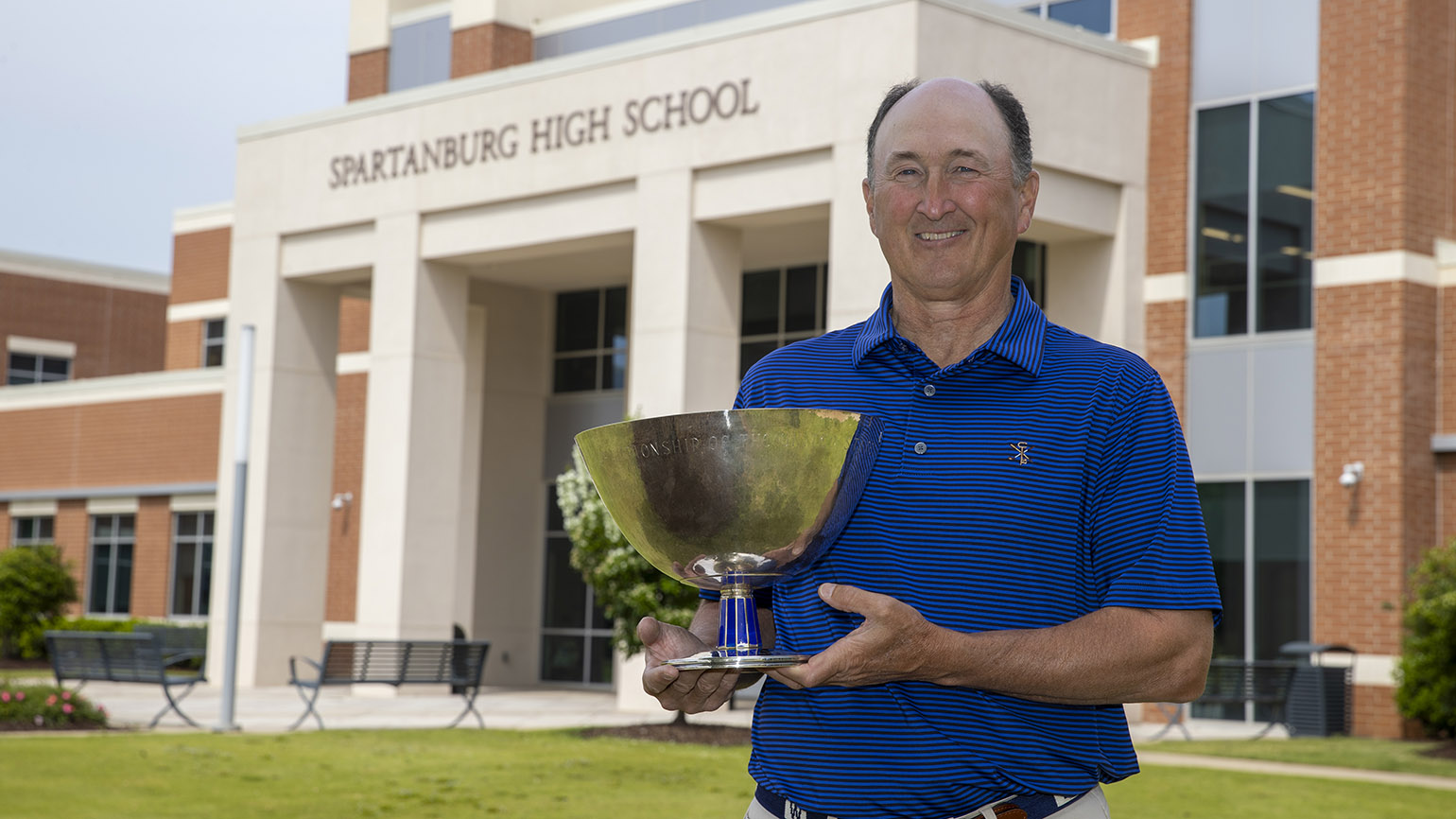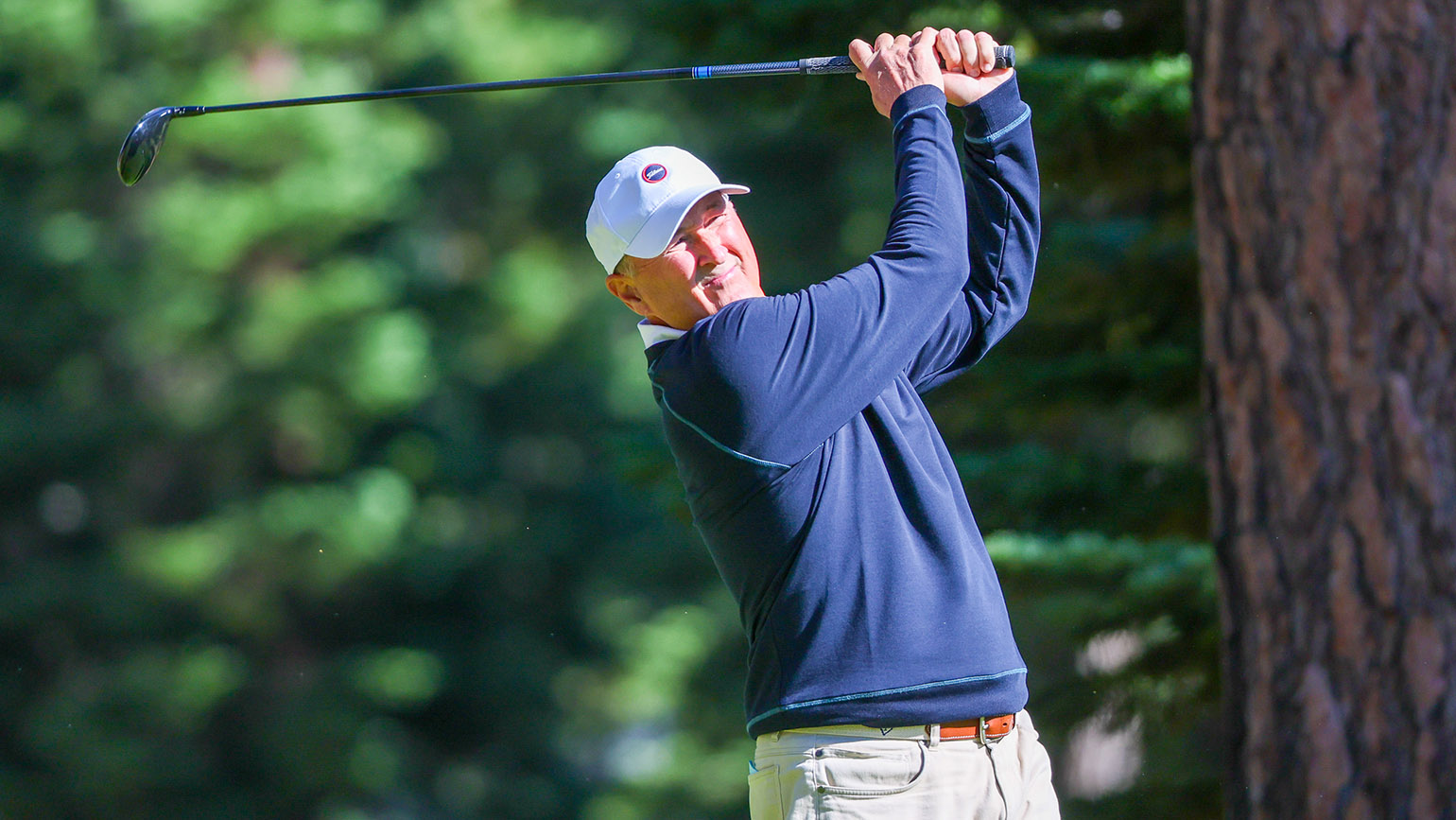Sawaia Finally Experiencing USGA Championship as a Player
Joe Sawaia has coached a U.S. Girls’ Junior champion, caddied for an ex-player in a U.S. Open and watched his youngest son compete in a U.S. Junior Amateur. But this coming week, Sawaia, a 55-year-old Henderson, Nev., resident who recently retired from high school coaching after more than 30 years, will finally get to experience playing in a USGA championship.
Sawaia is one of the 156 competitors who will tee it up in the 69th U.S. Senior Amateur Championship at The Honors Course, in Ooltewah, Tenn.
At Coronado High School in the Las Vegas suburb of Henderson, Sawaia led the Cougars to 13 state titles, seven with the girls’ program and six more with the boys. Besides coaching his two sons, University of Nevada, Las Vegas left-handers Ben and Brett, the latter of whom qualified for the 2022 U.S. Junior Amateur at Bandon Dunes Golf Resort, Sawaia was blessed to have a bevy of successful female players, including 2022 U.S. Girls’ Junior champion Yana Wilson, 2024 U.S. Women’s Amateur Four-Ball runner-up Brynn Kort and 2023 state individual champion Ali Mulhall. In fact, Coronado teammates Wilson, Kort, Mulhall and Lilly DeNunzio all qualified for the 2022 Girls’ Junior at The Club at Olde Stone, in Bowling Green, Ky.
Two of his former players have qualified for a U.S. Open, including Matt Edwards, who asked Sawaia to serve as his caddie at Congressional Country Club in 2011. Scott Lewis played at Bethpage State Park two years earlier.
But on July 15 at Rancho Santa Fe (Calif.) Golf Club, Sawaia finally punched his own ticket to a USGA championship by sharing medalist honors with Mark C. Miller, shooting even-par 72. He won’t be the only current or former educator in the field. Current high school history teacher Todd White, of Spartanburg, S.C., is the defending champion, while retired teacher/coach Dave Bunker, Spokane, Wash.,-based teacher Tim Rypien, and Portland State women’s golf coach William Winter II are among the qualifiers.
“I had done a few [previous USGA] qualifiers,” said Sawaia, who didn’t pick up the game until his early 20s after playing baseball for UNLV and one summer of professional ball in Salt Lake City. “I know the relevance of it and the importance of it. Anytime you can play in a USGA event, it’s really a special deal.”
In the spring of 1991, Sawaia found golf through a colleague while serving as a long-time physical education substitute at a Las Vegas middle school. He had just left a summer stint in professional baseball and returned to UNLV to complete his education degree. A weekend job at Sahara Country Club (now Las Vegas National) that entailed picking the range among other duties provided him a few extra bucks and free golf. Two years later, Sawaia, by then the baseball and girls’ golf coach at Valley High, the school that produced Hall of Famer Greg Maddux, was competing in local amateur tournaments.
He later taught PE and coached girls’ golf at Silverado High until Coronado High opened in 2001, where Sawaia exclusively coached the girls’ and boys’ golf teams to go along with teaching and running the school store. His wife, Noel, is an educator and works as a grammar school reading specialist in Henderson.
While honing his golf skills, he befriended Las Vegas local legend Brady Exber, a veteran of 26 USGA championships (seven U.S. Senior Amateurs), and as his game improved, he was invited into some of Exber’s games. The two even traveled to a number of high-level tournaments, including the Pacific Coast Amateur.
But when Sawaia’s two sons began taking golf seriously, Sawaia stashed his clubs and became a golf dad, shuttling Brett and Ben to tournaments and lessons at the Butch Harmon Golf Academy at Rio Secco near their Henderson home. He even became a volunteer men’s assistant golf coach at UNLV for one season (2020-21), which forced him to step away from coaching the boys’ team at Coronado due to the conflict of interest.
Because he had 30 years of tenure within the school district, Sawaia retired in 2021, but he continued guiding the girls’ program for another three seasons. Of course, it didn’t hurt to have the 2022 U.S. Girls’ Junior champion (Wilson) and three other talented qualifiers from that championship on the roster.
“You’re not really telling them what to do other than supporting them when maybe they don’t have their best stuff,” said Sawaia, who has had more than 30 players receive NCAA Division I scholarships. “You’re reminding them how good they are. Golf is always going to humble you no matter what. But they did more for our program than I did for them as players, for sure.”
Returning from a nine-year competitive hiatus had its challenges. For starters, Sawaia was closer to 50 than 40. His body reacted differently, and he had to mentally refocus. Coaching top players is one thing, but trying to beat them is another.
Turning 55 last September was a welcome sight as Sawaia didn’t have to face the young guns or top-flight mid-amateurs 10 to 20 years his junior.
“I have no physical limitations,” said Sawaia, who also assists the Southern Nevada Junior Golf Association with some of its competitions. “I feel like I am better now than when I was playing a lot of amateur golf [in my 20s and 30s]. It probably meant too much to me then. Now I have a different perspective on it, watching my boys grow up in junior golf and me coaching.”
When he did qualify for the U.S. Senior Amateur, plenty of former players reached out, including Kort and Wilson. Sawaia said the most rewarding aspect of coaching high school golf has been the relationships that he forged and continue long after the players graduate from Coronado High and college golf. He’s seen many of his ex-players get married and start their own families. Others such as his two boys and Wilson, Mulhall and Kort are just at the nascent stages of their golf careers.
Part of the reason for those bonds is the team philosophy he stressed during all his coaching stops. Not coming from a golf background – he played football and basketball in high school and pitched for UNLV – Sawaia had always been part of a group trying to achieve the same goal. It’s one reason why he was able to convince elite players such as Wilson, Kort and Mulhall to play high school golf rather than just focus on American Junior Golf Association events.
“You’re playing for the name on the bag. You are playing for the school,” said Sawaia. You only have seven to eight years to play team golf [in high school and college]. The rest of it is you and whatever support system is around yourself. The ability to play high school or college golf is a unique part of their [young] lives.
“The relationships I have with the boys and girls [I’ve coached] mean everything to me. The other day I was on the range [at Anthem Country Club] and one of my ex-players yelled out, ‘Hey coach.’ It’s a blessing to me that I never thought would be so rewarding. You can’t put a price on coaching. It’s really cool.”
David Shefter is a senior staff writer at the USGA. Email him at dshefter@usga.org.

















